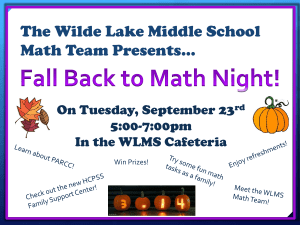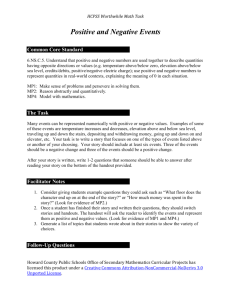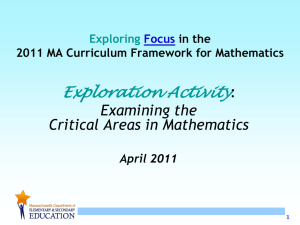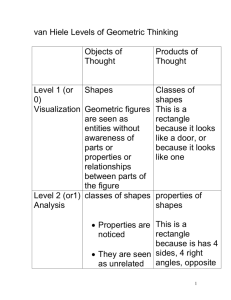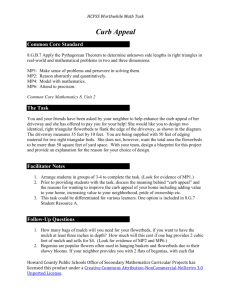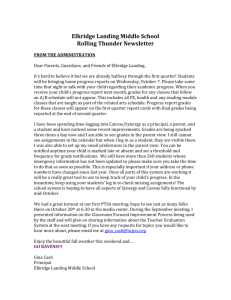KindergartenQuarter1Parent
advertisement
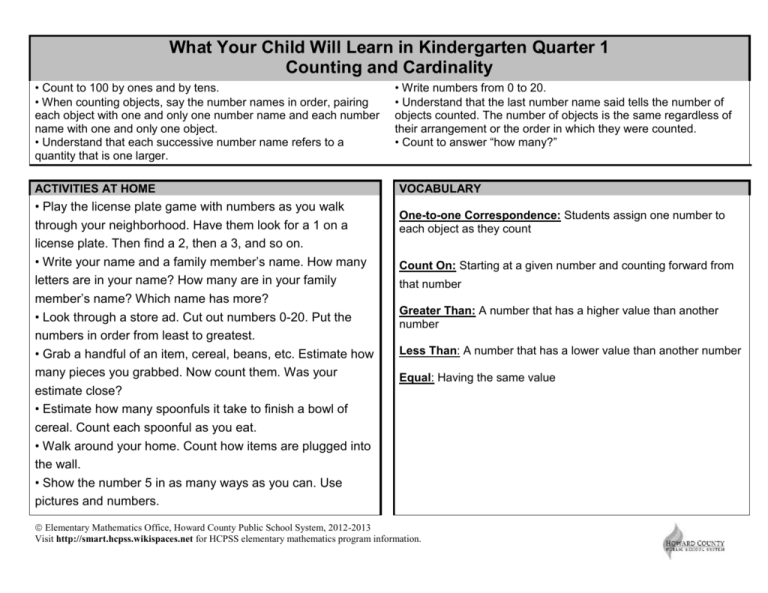
What Your Child Will Learn in Kindergarten Quarter 1 Counting and Cardinality • Count to 100 by ones and by tens. • When counting objects, say the number names in order, pairing each object with one and only one number name and each number name with one and only one object. • Understand that each successive number name refers to a quantity that is one larger. ACTIVITIES AT HOME • Play the license plate game with numbers as you walk through your neighborhood. Have them look for a 1 on a license plate. Then find a 2, then a 3, and so on. • Write your name and a family member’s name. How many letters are in your name? How many are in your family member’s name? Which name has more? • Look through a store ad. Cut out numbers 0-20. Put the numbers in order from least to greatest. • Grab a handful of an item, cereal, beans, etc. Estimate how many pieces you grabbed. Now count them. Was your estimate close? • Estimate how many spoonfuls it take to finish a bowl of cereal. Count each spoonful as you eat. • Walk around your home. Count how items are plugged into the wall. • Show the number 5 in as many ways as you can. Use pictures and numbers. • Write numbers from 0 to 20. • Understand that the last number name said tells the number of objects counted. The number of objects is the same regardless of their arrangement or the order in which they were counted. • Count to answer “how many?” VOCABULARY One-to-one Correspondence: Students assign one number to each object as they count Count On: Starting at a given number and counting forward from that number Greater Than: A number that has a higher value than another number Less Than: A number that has a lower value than another number Equal: Having the same value Elementary Mathematics Office, Howard County Public School System, 2012-2013 Visit http://smart.hcpss.wikispaces.net for HCPSS elementary mathematics program information. What Your Child Will Learn in Kindergarten Quarter 1 Measurement and Data • Describe measurable attributes of objects, such as length or weight. • Compare two objects with common measurable attribute, to see which object has “more of”/“less of” the attribute. For example, directly compare the heights of two children and describe one child as taller/shorter. • Sort objects into categories; count the numbers of objects in each category. ACTIVITIES AT HOME VOCABULARY • Trace your foot with chalk outside. Trace a friend’s or family member’s foot too. Which foot is longer? Attribute: A characteristic of an object that students use to define the object. Example: thin, thick, small, large, 3 sides, 4 sides, etc. • Sort a bag of skittles or other candy by color. Count each color. What color has the most? What color has the least? Length: The distance between two points or objects • Get three different cups. Put them in order from shortest to tallest. Sorting: Grouping objects based on similar attributes • Sort the mail by name. Who has the least amount of mail? Who has the most amount of mail? Weight: A measure of how heavy something is Non-Standard Units of measurement: Any real item that can be used to measure. Examples: paperclips, cookies, pennies, or yarn • Find 3 objects in the home that are longer than your shoe. Elementary Mathematics Office, Howard County Public School System, 2012-2013 Visit http://smart.hcpss.wikispaces.net for HCPSS elementary mathematics program information. What Your Child Will Learn in Kindergarten Quarter 1 Geometry • Describe objects in the environment using names of shapes, and tell positions of these objects using terms such as above, below, beside, in front of, behind, and next to. ACTIVITIES AT HOME VOCABULARY • Look around your home for solid shapes. Name at least 3 solid shapes. Two-Dimensional (flat): The outline of a shape such as a triangle, square, or rectangle • Look around your home for flat shapes. Draw at least three of the shapes. Square: A four-sided shape with equal sides and corners • Look around your home for circles. Count them and record how many you found. • Use bendy straw, toothpicks, or pipe cleaners to many shapes as you can. Record the names of your shapes. • Make a picture using 2 circles, 3 triangles, & 1 rectangle. Describe to a friend how you made it. Rectangle: A four-sided shape with two sets of sides that are equal and parallel, and four right angles Circle: A flat shape with no sides or corners Triangle: A three-sided figure Hexagon: A shape with six sides • Explore Position words. Use toys to model before, after, above, below, and beside. Describe using attributes. Ex. The blue car is behind the red car. Elementary Mathematics Office, Howard County Public School System, 2012-2013 Visit http://smart.hcpss.wikispaces.net for HCPSS elementary mathematics program information.
